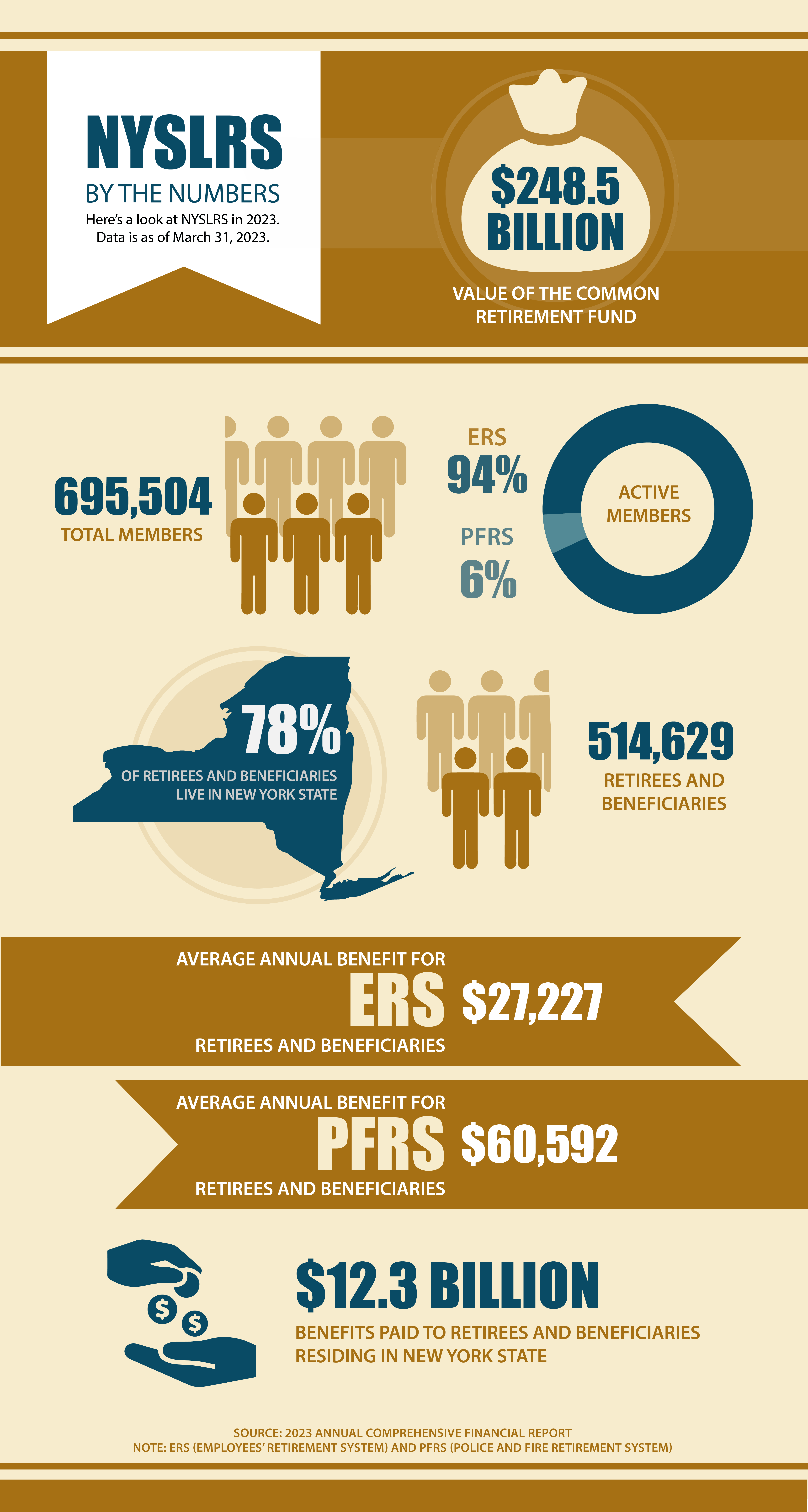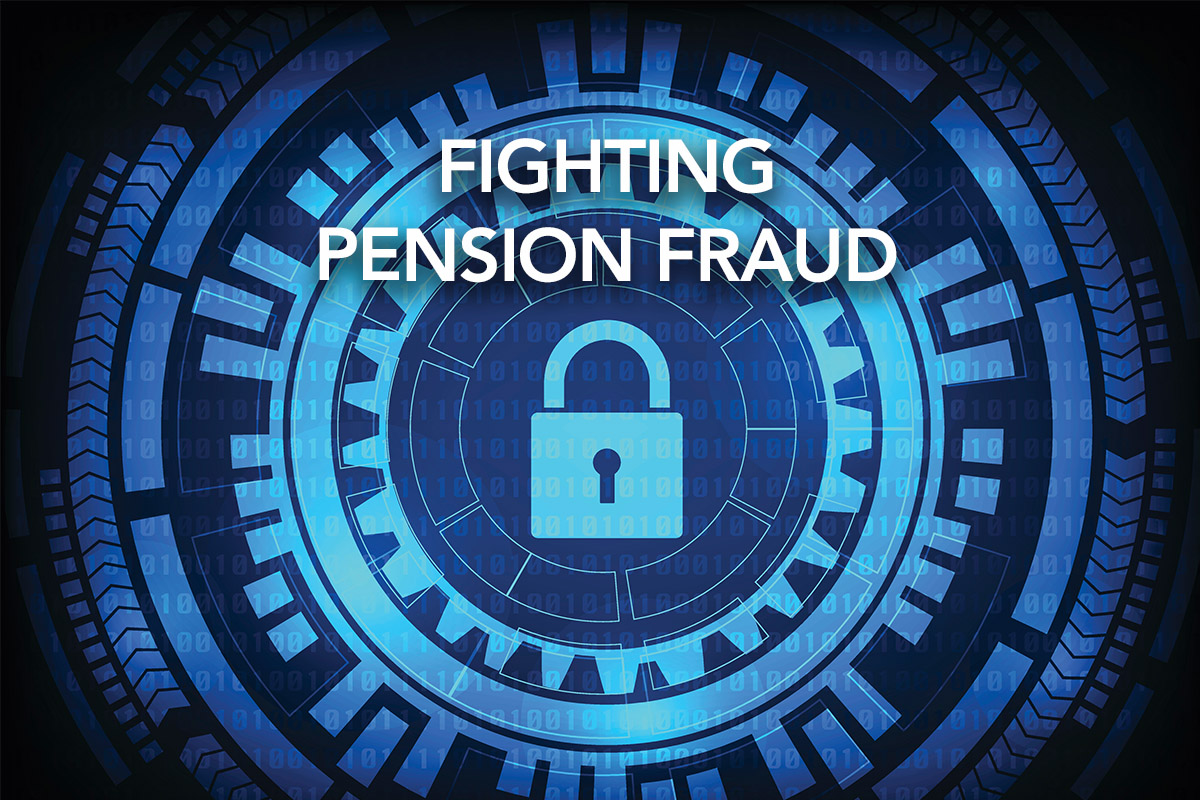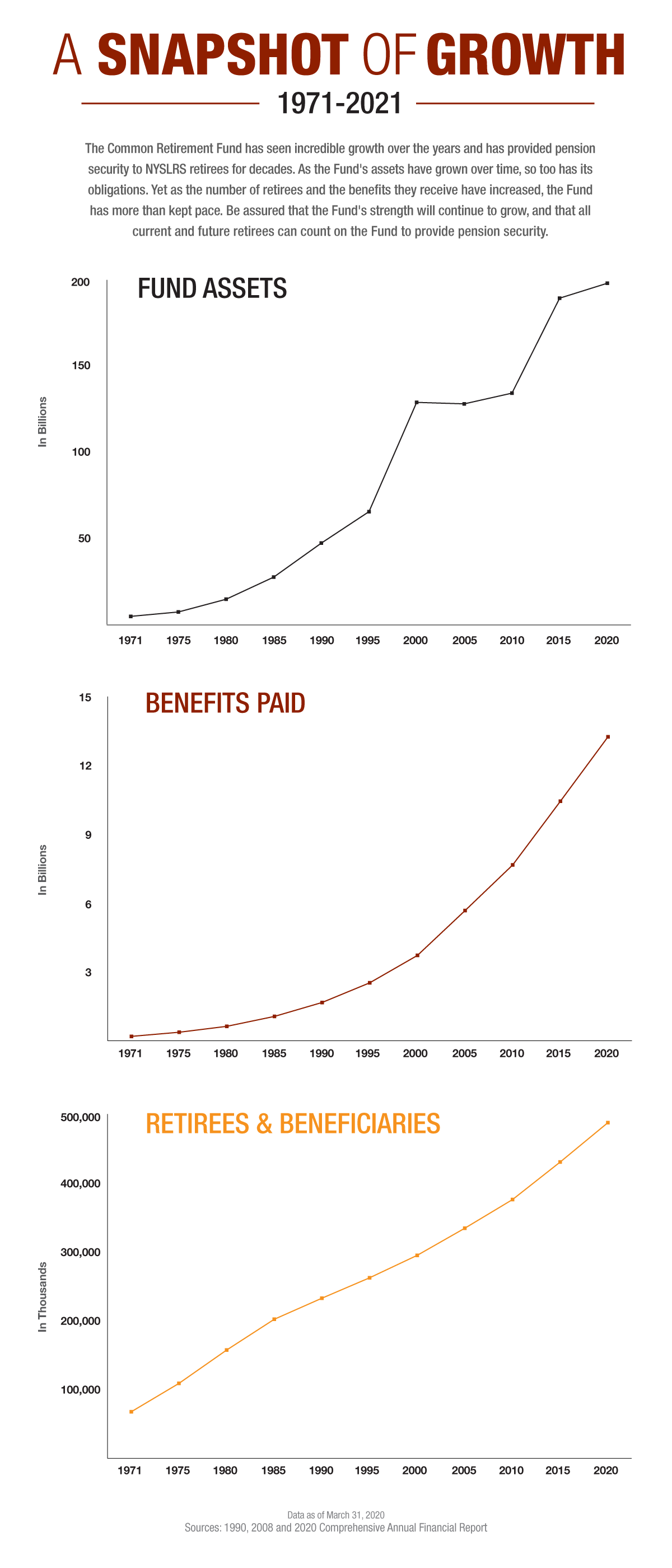The New York State and Local Retirement System (NYSLRS) administers two distinct systems. They are:
- The Employees’ Retirement System (ERS) with 659,750 members; and
- The Police and Fire Retirement System (PFRS) with 35,754 members.
During the State fiscal year that ended on March 31, NYSLRS provided pension benefits to nearly 515,000 retirees and beneficiaries. Altogether, that’s more than 1.2 million participants, making NYSLRS one of the largest public retirement systems in the nation.

New York State Common Retirement Fund
NYSLRS benefits are provided by the New York State Common Retirement Fund. State Comptroller Thomas P. DiNapoli is administrative head of NYSLRS and trustee of the Fund, which is widely recognized as one of the best-managed and best-funded public retirement funds in the nation. It’s also exceptionally enduring; 2021 marked the 100-year anniversary of the Retirement System.
NYSLRS Members
But NYSLRS is more than just the pension fund. Here are some facts about NYSLRS members as of March 31:
- 514,150 active members (that is, members still on the public payroll) work for 2,979 public employers statewide.
- About one-third of those active members work for New York State. The rest work for counties, cities, towns, villages, school districts and public authorities.
- Nearly 94 percent of total active members are in ERS. PFRS accounts for 6 percent of total active membership.
- Almost 60 percent of all members are in Tier 6.
- In ERS, 58.8 percent of members are in Tier 6, while 36.7 percent are in Tiers 3 and 4.
- In PFRS, 51.1 percent of members are in Tier 6, while 43.4 percent are in Tier 2.
NYSLRS Retirees and Beneficiaries
The average pension for an ERS retiree was $27,227 as of March 31, 2023; the average for a PFRS retiree was $60,592. But these pension payments don’t just benefit retirees and beneficiaries. About 78 percent of retirees and beneficiaries stay in New York State and generate billions of dollars in economic activity. Their spending supports local businesses, contributes to local taxes and creates jobs in our communities.
Learn More About NYSLRS
Detailed information about our members and retirees, the Fund and Fund investments can be found in the 2023 Annual Comprehensive Financial Report.







